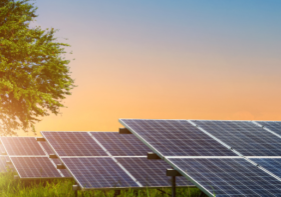With many electric vehicles already on the road, the city of Grand Haven is currently preparing to welcome the fast-approaching future of EVs, including the addition of charging stations at Grand Haven State Park. As automotive companies increase production, the success of this transition will rely not only on these more publicly visible charging points but also on less visible utility preparations for the necessary and substantial changes in electrical infrastructure to support them.
EVs Will Require More Electricity Than We Currently Use
Researchers at the University of Texas and the National Renewable Energy Laboratory commented in a 2018 interview that, “if virtually all passenger cars in Texas were electrified today, the state would need approximately 110 more terawatt-hours of electricity per year—the average annual electricity consumption of 11 million homes.” That’s a 30% increase in electricity consumed in the course of a year in the state of Texas.
It will take some time to scale to this size, but local utilities like Grand Haven BLP are already looking forward to planning for greater electricity purchasing needs in concert with other utilities and MISO, our regional grid operator.
Increasing Generation Capacity
In addition to the necessary changes in the local distribution system to supply greater overall energy use, another key consideration is gaining the additionally needed generation capacity – in other words, the combined wattage available from traditional plants and renewable power sources feeding into a shared electrical grid. Capacity is critical because it represents the region’s ability to meet simultaneous demand for power. For example, if most EV owners get home around 5:30 pm and plug in their cars at the same time, how do we make sure there’s enough generation feeding into the grid to meet the demands of those chargers at the same time?
According to a report from WIRES, the trade association for the power transmission industry, “As soon as 2030, 70 GW [gigawatts] to 200 GW of new electric generation will be needed to meet the estimated demand growth” coming from the rise in EV use. As a comparison, the generation capacity of JH Campbell in West Olive is about 1,420 MW (1.42 GW), so the US would need an additional 49-141 JH Campbells’-worth of power to make up the difference, or 500,000 to over a million acres of solar panels or wind turbines.

While this greater capacity and energy demand seems daunting, the US has successfully scaled electric generation in the past, for example in the 50s and 60s during the mass rollout of energy-consuming home appliances. That said, MISO has more recently warned of possible capacity shortages as power generation is retiring faster than it is replaced.
Charging EV During Off-Peak Hours
There are a few ways we can counter higher capacity needs without needing additional power generation. To accommodate the increased demand for charging vehicles, Greg Craig, CEO of Griddy, a wholesale electric provider, told POWER magazine that grid operators will have to find ways to regulate the times we charge EVs to control peaks. Currently, peak electricity times for the greatest portion of the electric system occur in the late afternoon as people return from work. As consumers of habit, USDRIVE’s Grid Integration Technical Team expects most EV owners to plug in immediately after coming home from work, exacerbating peak draw times.

Instead, if utilities could regulate EV charging to occur in off-peak times, overall peak demand wouldn’t have to increase as much. Without additional power generation from regional sources, EV users may have to charge their cars at less than ideal times to assist grid operators in balancing load and supply or consider energy storage alternatives like large home batteries. Additionally, as more electric production comes from solar energy, there may be a greater incentive to charge electric vehicles during daylight hours, when solar energy is produced.
Transmission Upgrades
Likewise, transmission lines will also need to be upgraded to handle the increased power load needed for widespread EV adoption. Simon Whitelocke, President of ITC Michigan which services Michigan’s transmission lines told POWER magazine “Coupled with the rapid expansion of renewable energy, the deployment of new distribution and storage technologies, and ever-increasing ways Americans are using electricity—including powering the steady growth of EVs—we’re facing a power grid that wasn’t conceived for these uses.” In short, as power capacity needs grow from EVs, the need for robust transmission systems to get power from power plants to substations to our homes and businesses also grows. The BLP distribution system will require modification as these changes occur in order to deliver the electricity from the transmission system to the point of use.
Conclusion
Though we have some time before mass adoption of EVs, Grand Haven BLP is looking for ways that we can work together to educate our customers, collaborate with our grid operator, and continue to upgrade our technology so we may successfully continue to provide our customers with reliable, affordable, sustainable energy, in an adequate volume to meet our customers changing demands.



